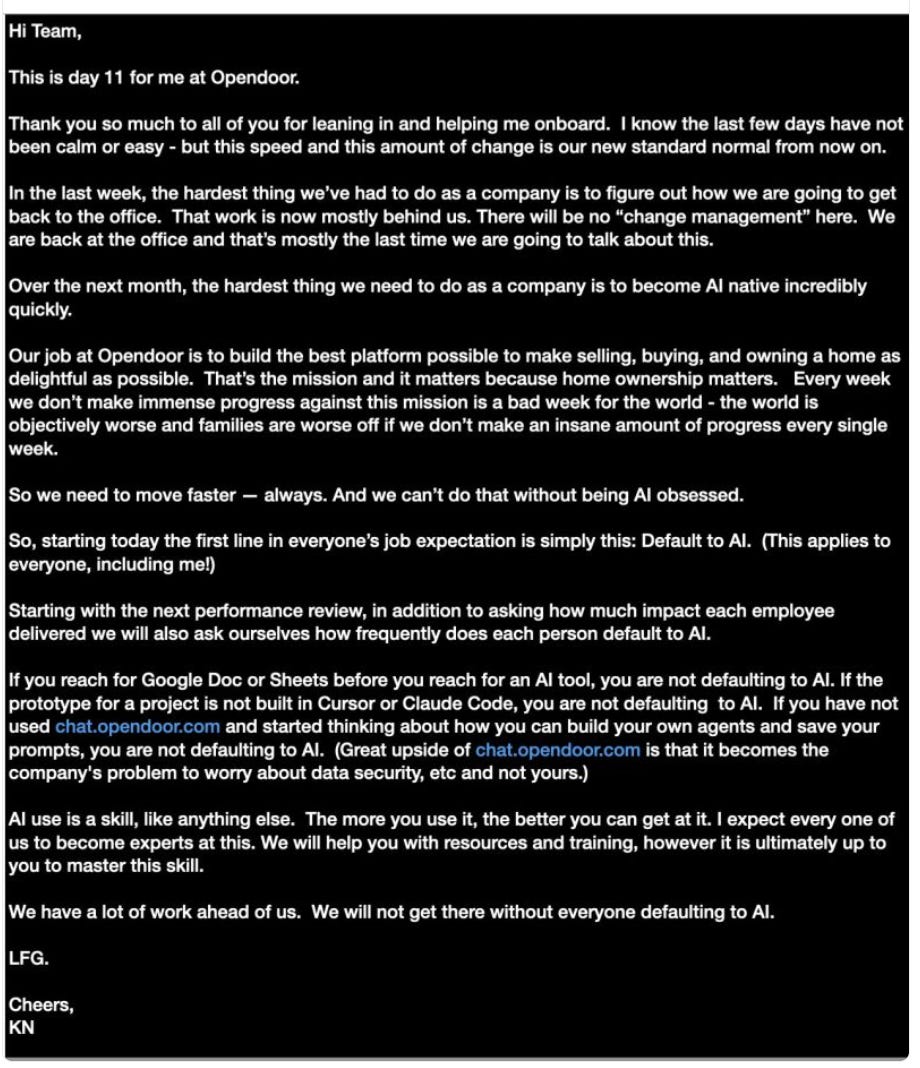The Real Business Advantage of AI
Context, Context, Context
Recently, a CEO shared an internal email (see below) urging employees to “default to AI.” The tone was urgent: move faster, prototype using AI tools, and utilize AI first before relying on Google Docs or Sheets. Unsurprisingly, the response has been polarized. Many saw it as a mandate for AI to “do the thinking,” a fear rooted in the reality that AI can generate confident, polished answers even when it’s wrong.
It is worth remembering that the CEO who wrote this is likely not a technical leader. From his perspective, AI represents speed: faster iterations, fewer blockers, and a way to accelerate execution. Everything else, how AI actually works, where it is reliable, and where it is not, is secondary. CEOs are measured on outcomes, not architectures.
But here is the catch: before a human does anything, the framing and understanding of the problem is critically important. With or without AI, people often default into “solutioning” mode before they fully understand the context of the problem. That is why critical thinking skills remain essential. Critical thinking enables us to strip away assumptions, probe the boundaries of the issue, and clearly understand the context before jumping to conclusions.
AI does not replace this step. What it can do is support it. Just as we once celebrated the ability to use the internet (e.g. Google, Bing) to gather perspectives, we should now celebrate AI’s ability to do the same thing, only better. Instead of narrow keyword matches, AI can synthesize across vast domains, highlight connections, and surface how others have solved similar challenges. The scope is broader, the synthesis sharper, and the research faster.
In real estate, the mantra is location, location, location. Value is determined not by the building itself, but by its location. In business, when it comes to AI, the mantra should be context, context, context. Value is determined not by the output itself, but by how well it is grounded in the domain of the problem.
Why context matters more than output
Generative AI will happily produce a convincing answer. Without a grounding in the business context, the domain of the problem, the market constraints, and the nuances of customer expectations, the answer may be irrelevant, misleading, or even dangerous.
AI is at its best when it:
Accelerates ideation by helping teams explore multiple pathways quickly.
Sharpens the definition of the problem by reframing its expression.
Assists in decision-making support rather than decision replacement.
The human layer of domain expertise
Leaders and strategists must provide the guardrails:
Frame the business problem with critical thinking. AI should not set the agenda; it should help us interrogate it.
Validate with judgment. AI’s confidence is not a proxy for truth. Business leaders bring experience, values, and a commitment to accountability.
Leverage for scale, not abdication. When framed well, AI can scale insights, automate lower-value tasks, and create space for higher-order thinking.
Default to AI? Or default to context?
“Default to AI” overlooks the broader implication. The competitive edge is not in using AI everywhere; it is in knowing where and how to apply it. A company that applies critical thinking to frame its domain context, and then uses AI to extend that thinking, will outpace a competitor that blindly pushes buttons.
That is why the mantra is context. Just as location defines the relevance and price of real estate, context establishes the relevance and impact of AI-driven outcomes.



